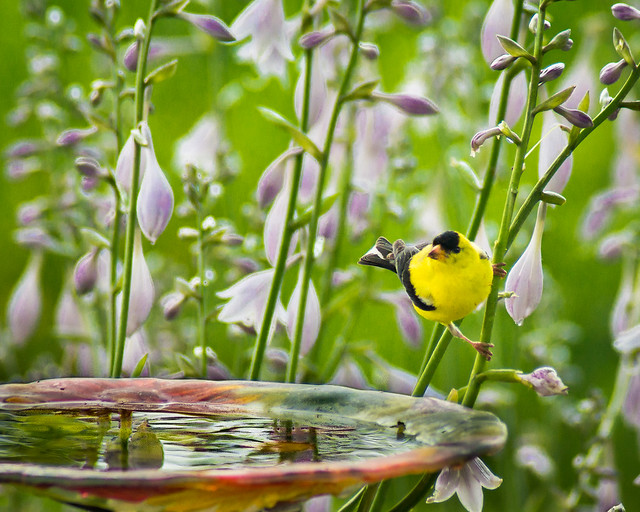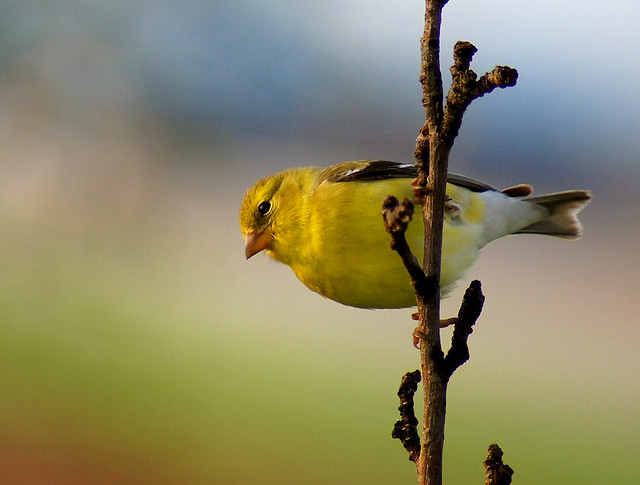Goldfinch
Poolside Perch
American Beauty
Goldfinch on Lookout
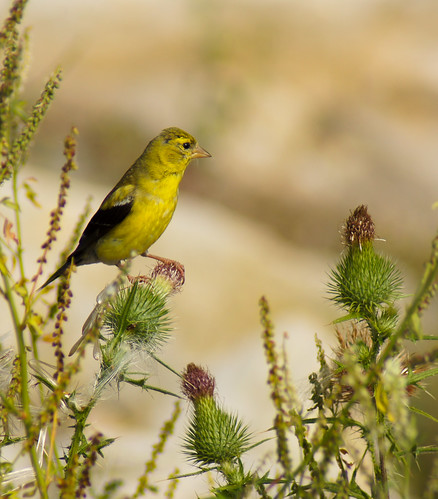
An male American Goldfinch looks over the surroundings, comfortably perched on a purple thistle.
This particular bird had a staring role in a couple of earlier posts – Fan Dancer and Watchful Eye. He was not particularly shy and allowed me to get closer than most birds will. I was grateful.
To get a larger view (provided you have a large size monitor), click on the photo.
American Goldfinch Portrait
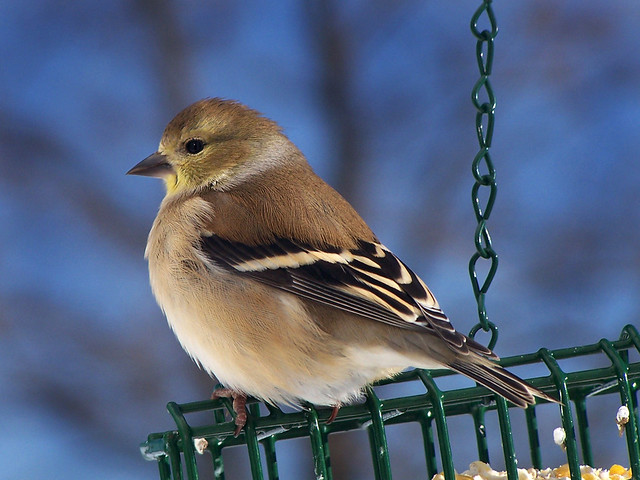
Isn’t she a beauty. This is a female American Goldfinch. She was kind enough to pose for this portrait on the suet feeder. She cam decked out in her Sunday best, winter plumage; not a feather out of place. I’m sure it was a cold day.
This is a photo I pulled up from the archives. It was taken a few years ago using my old Kodak Easyshare DX75909. For a simple camera (compared to what I use today), it did some exceptional work.
To get a better look, click on the photo for a larger version.
Fan Dancer
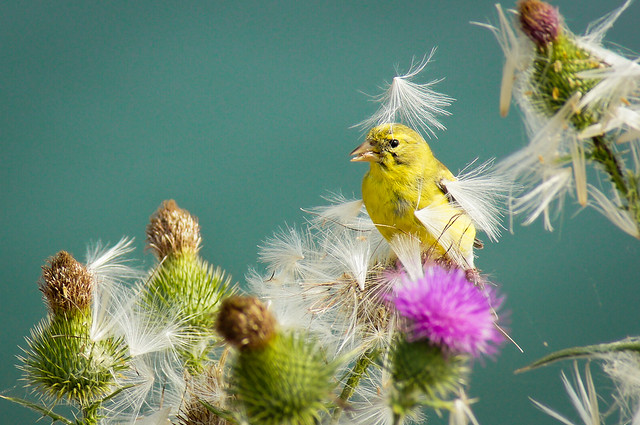
This was an American Goldfinch that I found by the marina in Algoma, Wisconsin. He was feasting on the thistles growing near the water’s edge; pulling out the white tufts and munching on the seeds. As you can see, thistle seeds are light and airy and tend to float with the breeze.
To get a closer look, click on the photo and it will open in it’s own browser tab.
Watchful Eye
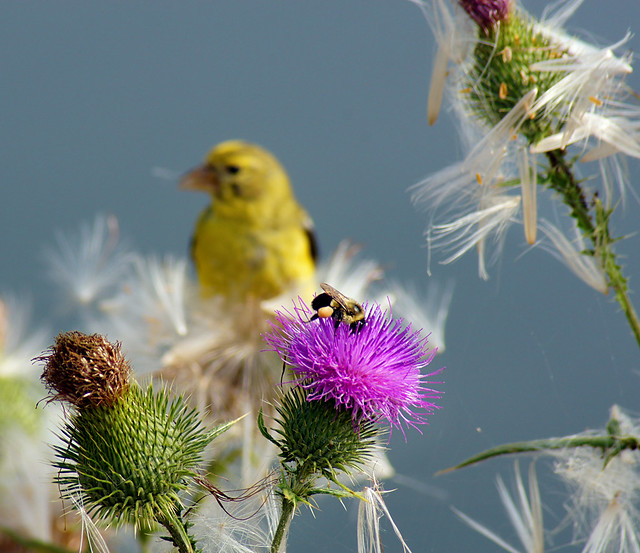
Here’s a little touch of nature for you. I stopped to take some photos around the harbor at Algoma, Wisconsin. It wasn’t a foggy day elsewhere, but conditions were right to create a foggy area around the piers and lighthouse. I took a few photos (some I’ll be posting later) of the pier and a fisherman in the fog, and the lighthouse and boats.
As I finished and headed back to my vehicle, I noticed a few wildflowers growing near the water. I stopped to take a few random shots. Then I noticed a few bees – always a favorite photographic subject of mine – so I stopped to take a few photos of them. Then, as I started to leave again, I noticed a flash of yellow. An American Goldfinch landed in a nearby patch of thistles to enjoy a meal. It didn’t seem bothered by my presence, so I started taking photos. (Some I’ll post later.)
While concentrating on the Goldfinch, I happened to notice a bee in the foreground and refocused on the bee for awhile…as the bird continued to feast in the background.
The one thing I don’t like about this image (and others in the batch) is the background. I think it looks unnatural and fake. The background is simply the water of the harbor. I would have preferred something that had a little more color variation, instead of the flat blue, but I wasn’t able to change my position to create a different look. The thistles were only a foot or two from the water and I was shooting from a position higher than the bird.
If you’d like to see a larger version, just click on the photo.
This photo, and another cropped version, is available for sale. To see pricing, click on the blue bar below.
Flying Circus
 There are times when I look out the window of our rural home and think, “What a circus!” Birds are flying in every direction to take advantage of a free meal from one of our many feeders.
There are times when I look out the window of our rural home and think, “What a circus!” Birds are flying in every direction to take advantage of a free meal from one of our many feeders.
Of all the birds we see, the American Goldfinches are among the most active and consistent performers at our house. It can be quite entertaining to watch them zipping in and out; hither and yon.
When frozen by the camera, the Goldfinch’s quick, bouncy style of flight seems unnatural and awkward.
All of the birds in this photo are American Goldfinches – except the one Chipping Sparrow whose tail can bee seen as he perches on the back side of the feeder.
(Click the image for a larger version.)
Bottom View

 This American Goldfinch (male) was hanging on the top of the finch feeder, waiting for an opening on one of the perches below. As you can see, it’s a popular neighborhood dining spot.
This American Goldfinch (male) was hanging on the top of the finch feeder, waiting for an opening on one of the perches below. As you can see, it’s a popular neighborhood dining spot.
This image was taken on a drab and drizzly day, so you’ll notice his feathers appear a bit damp.
There is no shortage of Goldfinches at our house – year round. (Might have something to do with the food we put out.) It’s nice to see them back in their bright yellow and black plumage for the spring and summer.
(Click on the main image for a larger view.)



















































